The mad scientist is back at work. It’s a new bracing experiment that we’re calling chopsticks, because, well… they look like chopsticks. It’s not just a frivolous experiment either. In our ongoing search for new and better ways to build our ukuleles we came up with this bracing scheme. In this test, we built two crisscrossed, arched braces that attach to the bridge plate, arch up off the soundboard and then connect to the upper bout. This reduces the mass of the bracing on the lower bout and frees up the area around the soundhole. Here are the first spy pictures.
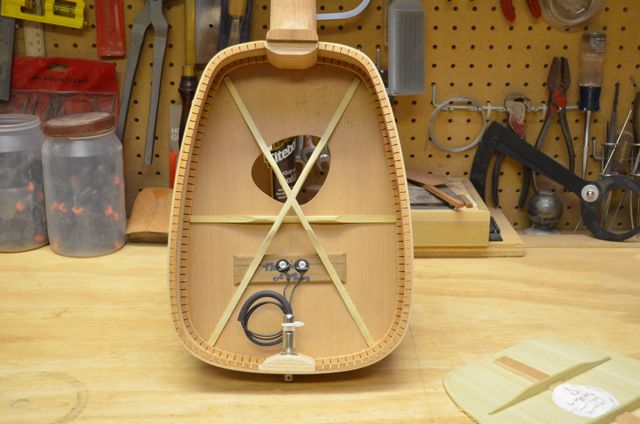
Chopsticks! Here you can see our two thin braces that form a big “X” in the enter of the ukulele. The braces criss-cross and are joined at the intersection.
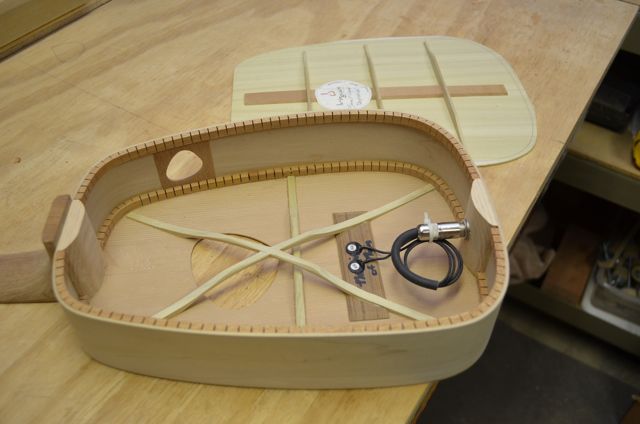
You can see the arch of the braces in this view. They attach to the bridge plate and very thin legs extend into the lower bout to support the soundboard. You can als see the reinforced side for the side port. Since the sound hole is blocked by the crossed bracing, we installed a pickup before we closed up the body since we would have no access later.
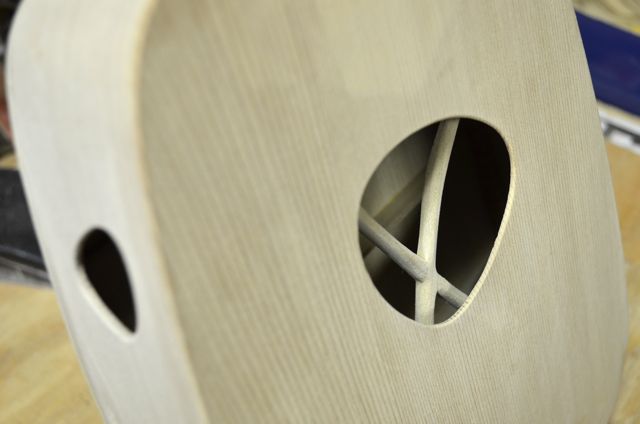
The crossed braces create a very interesting visual in the sound hole. The side port is our ‘wobbly’ shape to match the soundhole.
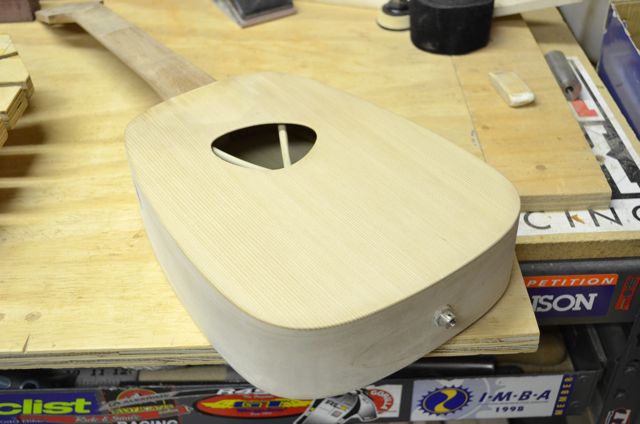
“Chopsticks” has a one-piece cedar soundboard, with Poplar on her sides and back. She is very lightweight.
How will she sound? Time will tell. Preliminary tapping on the body is very encouraging however. Drawbacks to our chopstick bracing? It definitely takes longer to shape the braces and to get the braces to fit just right. Lots of hand shaping. Also the “X” blocks the soundhole but that’s a tradeoff because we think it looks wicked cool! Bottom line is, if it sounds great, it’s worth the effort.
Smile when you play that!™

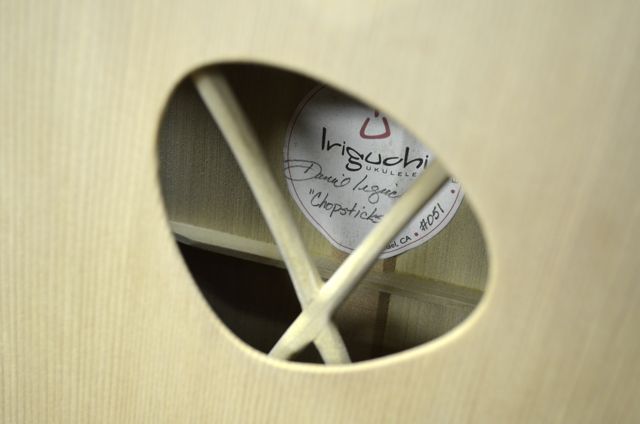
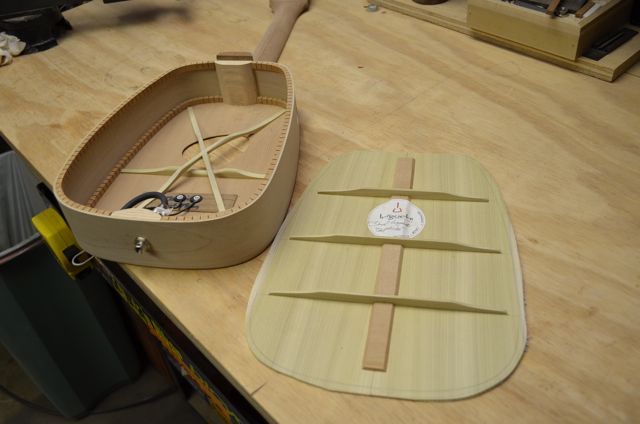
Very Interesting Hugo, you mad doctor you!
wicked cool! I am interested to hear how it sounds